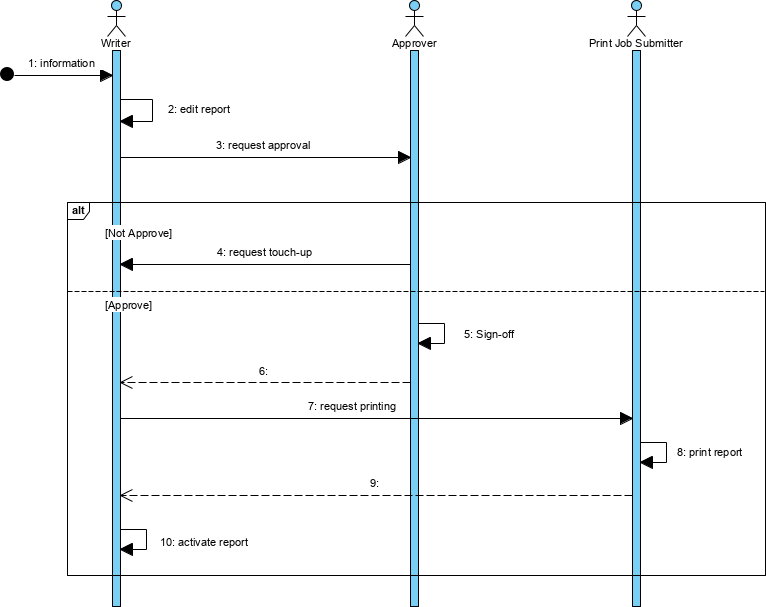The SvcV-10c provides a time-ordered examination of the interactions between services functional resources. Each event-trace diagram should have an accompanying description that defines a particular scenario or situation.
The SvcV-10c is valuable for moving to the next level of detail from the initial solution design, to help define a sequence of service functions and service data interfaces, and to ensure that each participating resource or Service Port role has the necessary information it needs, at the right time, to perform its assigned functionality.
Usage
The intended usage of the SvcV-10c includes:
- Analysis of resource events impacting operation.
- Behavioral analysis.
- Identification of non-functional system requirements.
Product Description
The SvcV-10c specifies the sequence in which Resource Flow elements are exchanged in context of a resource or Service Port.
The items across the top of the sequence diagram are usages of resources or resource ports. The lifelines are depicted as vertical lines descending from the resources and ports.
Arrows between the lifelines represent exchanges of messages (data), materiel, energy or human resources. The direction of the event lines represents the flow of information from one resource/port to another. The Service Event-Trace Description provides a time-ordered examination of the Resource Flow elements exchanged between participating resources (external and internal) or service ports. Each Event-Trace diagram should have an accompanying description that defines a particular scenario or situation.
The SvcV-10c is typically used in conjunction with the SvcV-10b Services State Transition Description to describe the dynamic behavior of resources. The data content of messages that connect Resource Flows in a SvcV-10c model may be related, in modeling terms, with Resource Flows (interactions, in SvcV-1 Services Context Description, SvcV-3a Systems-Services Matrix, and SvcV-3b Services-Services Matrix), Resource Flows (data, in SvcV-4 Services Functionality Description and SvcV-6 Services Resource Flow Matrix) and entities (in DIV-3 Physical Data Model) modeled in other models.
Creating a Services Event-Trace Description (diagram)
To create a Services Event-Trace Description diagram:
- Click on Services Event-Trace Description in the Action Artifact area, and then select Create New Diagram.
- Type the diagram name and press Enter.
- A blank diagram is created and you can start constructing the view.

DoDAF in Visual Paradigm
The DoDAF is brought to you by Visual Paradigm, a full-featured development platform. Visual Paradigm provides an easy-to-use, model-driven DoDAF tool that supports the development of DoDAF 2.02 views and models. You can create integrated DoDAF products and generate architectural documents that facilitate organizations to efficiently coordinate enterprise architecture initiatives.